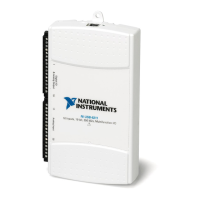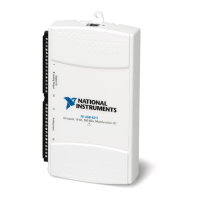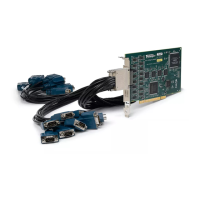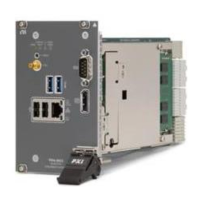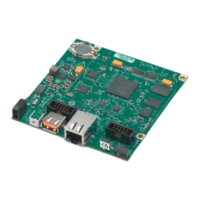© National Instruments | 3-15
NI 6612 User Manual
Low Frequency with 1 Counter
For this method, the device detects the first full period of the signal-to-measure. The counter
measures the duration of this period by counting the number of cycles (T2) of the timebase.
DAQmx reads T2, and uses the known frequency of the timebase (f
k
), to calculate the frequency
of the input signal (f
x
) as:
Figure 3-17. Frequency Measurement: Low Frequency with One Counter
The maximum error and maximum frequency error for this method, are given by:
To use the Low Frequency with 1 Counter method, configure the following:
• DAQmx Create channel (CI-Frequency)—Use this VI or function to create the channel.
• CI.Freq.MeasMeth—Set this property to Low Frequency with 1 Counter.
By default, the counter measures the frequency on a default PFI terminal (refer to Chapter 5,
Counter Signal Routing and Clock Generation, for more information) and use an onboard
100 MHz clock as the timebase. To change the signals used for this measurement, configure the
following:
• CI.Freq.Term—The signal-to-measure comes from an input terminal. To change the
signal-to-measure, set this property to a different terminal.
• CI.CtrTimebase.Src—To change the signals used as the counter timebase, set this
property to a different terminal.
123 … T2…
Frequency of
f =
T2
Interval Measured
f
DAQmx
Start Task
x
k
Signal to
Measure (f )
Counter
Timebase (f )
x
k
Maximum Error (%)
f
x
f
k
f
x
–
-------------= 100%×
Maximum Frequency Error (Hz) f
x
f
x
f
k
f
x
–
-------------×=

